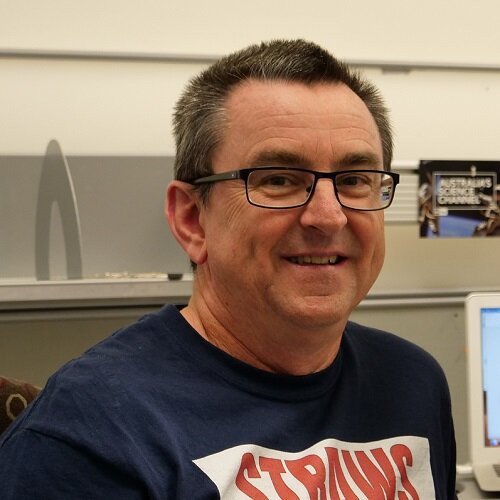Last updated June 18, 2020 at 11:07 am
On the longest night of the year, join scientists looking up at the skies to map light pollution.
Stargazing at Siding Spring Observatory, near Coonabarabran, NSW.
Credit: Angel Lopez-Sanchez
Why This Matters: The impacts of light pollution are far-reaching.
Looking for something to do on the longest night of the year? The Australasian Dark Sky Alliance (ADSA), ARC Centre of Excellence in All Sky Astrophysics in 3 Dimensions (ASTRO 3D) and their partners might have a little job for you.
Whatever the weather and wherever you are, they’d like you to look to the night skies on Sunday 21 June to help them measure light pollution around the country. It’s a great way to get involved in a growing global movement: citizen science.
“We’re expecting thousands of people to join us on Australia’s longest night, to help researchers create a map of Australia’s darkest skies, and learn about light pollution and its effect on people, animals, and astronomy,” says Marnie Ogg, CEO and founder of ADSA.
“Together, our observations will map how light pollution varies across Australia’s cities and regions, and make a Guinness world record attempt for ‘Most users to take an online environmental sustainability lesson in 24 hours’.”
Also: Six easy ways to stop light pollution from harming our wildlife
Light pollution creates a range of problems
There are myriad reasons to measure and improve our understanding of light pollution.
From a science perspective, astronomy is adversely affected by atmospheric light at night. It reduces contrast between heavenly bodies and the sky and dims the visibility of diffuse sky objects like nebulae and galaxies.
Artificial light affects earth-bound life by such things as disorienting some animals and plants, and messing with humans’ ability to get a good night’s sleep – queue link to chronic sleep deprivation and its litany of health problems including obesity, diabetes, cardiovascular disease, mental health issues and accidental injury. Depending on the power source, artificial light can contribute to climate change by wasting electricity.
World map of artificial sky brightness. The map shows, in twofold increasing steps, the artificial sky brightness as a ratio to the natural sky brightness (assumed to be 174 μcd/m2). The table indicates the meaning of each colour level. Credit: F Falchi et al., Science Advances 10 Jun 2016: Vol. 2, no. 6, e1600377
Light pollution can also interfere with indigenous peoples’ ability to share and practice culture. Constellations and the night sky have special significance in many traditional cultures, including those of Indigenous Australians.
“The Australian night sky is amazing,” says astronomer Lisa Kewley, director of ASTRO 3D.
“Our galaxy, the Milky Way, is painted across the sky. It’s a view that encourages us to wonder what’s out there, amongst the billions of stars. It’s a view that encourages kids to take up science and physics. But most Australians can’t see it – their view of the sky is blinded by light pollution.”
Don’t be put off by bad weather
To get involved you need only a computer, smartphone or tablet with an internet connection. Sign up to the project here, then sign in on 21 June from 1pm AEST to get going.
You’ll need to watch some videos, answer the (five) questions, and do a night sky observation using the Globe at Night web app – which the project website will direct you to.
Southern hemisphere sky watchers will be looking for the Southern Cross (Crux) constellation. Northern hemisphere participants will focus on the Bootes constellation.
Observations – valid even if it’s cloudy or raining, so don’t be put off by bad weather – will be uploaded to the Globe at Night dataset in real time.
Globe at Night is an international research program based on citizen science measurements of light pollution in the night sky. Globe at Night’s coordinating researchers compile this information into a public, freely available map of global light pollution.
The Guinness World Records attempt is a fun extra – and note that you have to complete the ‘lesson’ in 24 hours to contribute. It may take several weeks for Guinness World Records officials to confirm the status of this attempt.
Also: LED light pollution wreaks havoc on the natural world
We’ve become accustomed to light-polluted skies
Most of us are so accustomed to light pollution that it’s hard to imagine its significance and impact in comparison to an older, darker world – one shaped only by nature’s illumination.
“For example, light pollution from cities distracts bogong moths as they migrate from Queensland to Victoria’s alpine regions,” says University of Melbourne wildlife ecologist Jen Martin.
“If they don’t arrive on time, the endangered mountain pygmy possums that depend on them for food will starve.”
It’s thought that as few as 2000–3000, likely less, of the mountain pygmy possum (Burramys parvus) survives in the wild. For you, one cool evening – or cold, depending on where you live in Australia – might help it endure.




























































































































































































































































